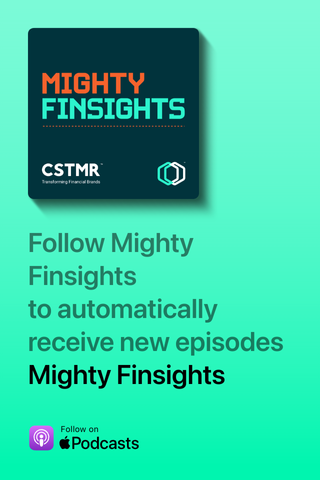The current health crisis has forced many companies to shift away from traditional, in-person sales and marketing methods like one-to-one sales meetings, conferences, and other networking events.
To quickly solve for lost revenue streams, many businesses are shifting to digital marketing. According to Gartner’s recent CMO spend survey, digital accounts for almost 80% of marketing channel budgets in 2020 across paid, owned, and earned channels.
Digital marketing can be a game-changer for most businesses—especially fintech and financial services brands—which is why it’s important to be strategic. Costs can add up quickly, and your campaigns won’t be effective without a strong strategic foundation.
Here are a few simple strategy exercises we recommend to help set your fintech business up for digital marketing success.
Exercise 1: Define Your Target Market
Several digital platforms leverage very specific data parameters for audience targeting. The hundreds (sometimes thousands) of options can be overwhelming for digital marketing newbies.
Selection variables include traditional demographics, device usage, online behavior, spend or credit behavior, and even hobbies and interests. For business-to-business (B2B) marketing—company firmographic parameters, aggregate buying signals, departments, titles, and skills may also come into play.
The more data you have about your target audience, the stronger your targeting, platform, and channel selections will be.
Look-alike models can help you jump the learning curve where limited data exists, but you need to be thoughtful about which audiences and behaviors you choose to mirror because the outputs are only as good as the inputs. For example, if your product or service has changed recently, you might not want to use clients that leveraged old product offerings as the model for new leads.
To establish a strong targeting foundation, create an ideal customer profile (or multiple profiles depending on your goals and sales mix) that leverages your existing customer or market data. This exercise will be beneficial for your business overall and will help get your sales and marketing teams on the same page. You might even be surprised by what you learn after removing individual biases, trends, and agendas to let the data pave the way. If you need more help, there are several data-centric organizations out there (like CSTMR!) that can help bolster your targeting with specific data points.
Exercise 2: Map Your Target Audience’s Online Behavior By Analyzing Keywords, Media Consumption, and Personal Preferences
Once you have a data-driven sense of your target audience, you will need to build content to engage them online. Many fintech companies jump into a blog or podcast without considering where their target audience spends time online, what information their audience needs to make a buying decision, and what hurdles they may need to overcome.
Take time to consider where each target audience “hangs out” on the internet, what media they consume, and think about what questions you’ll need to answer for them during their buying decision.
Some suggested questions to ask your team include:
- What problems are we looking to solve for our audience?
- What information will our audience need to educate themselves about our product?
- What existing frames of reference are available for positioning our product?
- What types of information will convince our audience that we’re credible and trustworthy?
Once you’ve strategized with your team, go straight to the source. Ask your actual customers the same questions for even more valuable insights.
Effective content—whether it be a website, ad copy, or long-form downloadable assets—should be developed with your target customer’s online journey and needs in mind. The problems you solve for your target audience will form the framework of your value proposition.
It’s also vital to understand your audience’s search behavior by asking these questions:
- Do people search for our product or service?
- What phrases do they use?
Your internal team may use phrases to refer to your products and differentiators that your target audience would never think to search for.
Alternatively, common keywords or phrases could be extremely competitive to bid on, which changes the per-click economics you may be anticipating. Saturated or highly competitive industries could be very expensive or require minimum spend levels to increase share of voice. That’s why it’s important to do comprehensive keyword research before beginning a new digital marketing campaign.
Exercise 3: Align ROI Expectations to Business Goals
Knowing what one customer is worth to you and what your current customer acquisition cost is will help you set baseline metrics and put your ROI expectations into perspective.
Even if you hire a digital marketing agency, they’ll want to size your ad spend budget based on marketplace dynamics and return expectations. Without a strong sense of bottom-line goals, you run the risk of getting bogged down in vanity metrics that don’t translate into real results for your business.
Equally important is giving yourself some sunk cost or runway to establish an early testing foundation. There will be kinks and nuances to work out as you learn in real-time and figure out how online behavior translates into sales for your business—especially if you typically have long sales cycles.
Digital marketing is the way of the future, but you can’t dive into it without a complete understanding of your business goals and customer preferences. With these three exercises, you and your team will be well on your way to creating a comprehensive digital marketing strategy that will reach your target audience online at all hours of the day.
As Lead Strategist at CSTMR, Jess combines her 20+ years of financial services acumen and marketing expertise to develop impactful strategies for clients that are informed by industry best practices. Jess lives in Chicago with her family and enjoys playing tennis in her free time.





